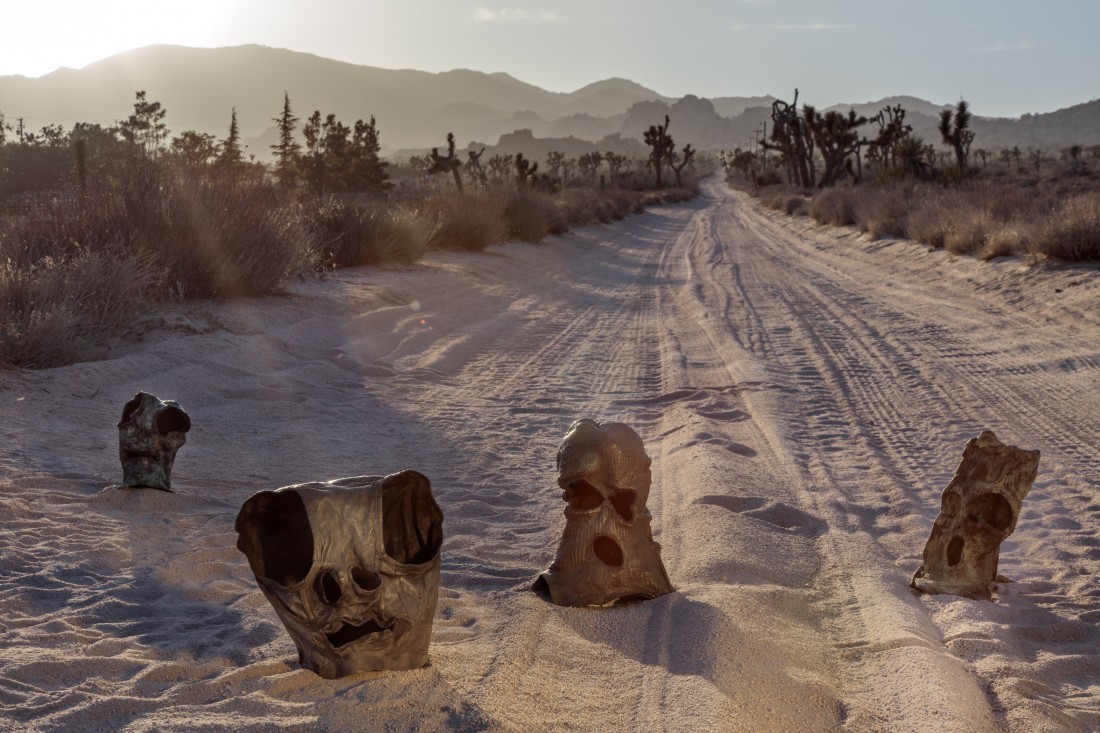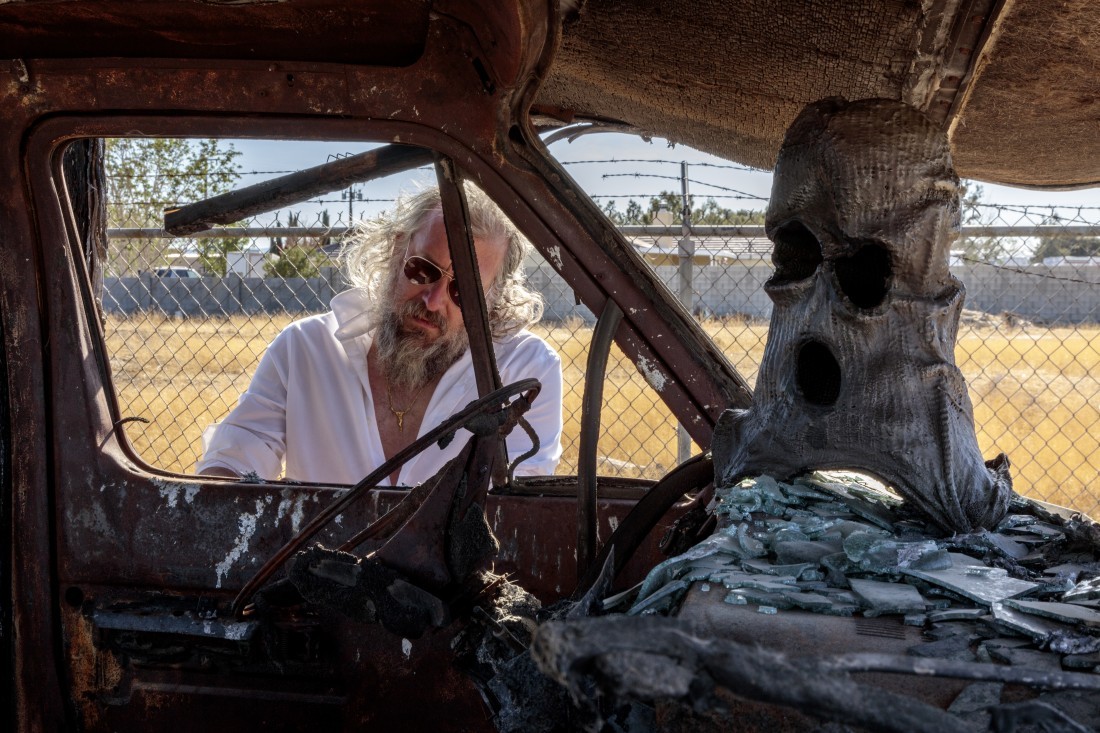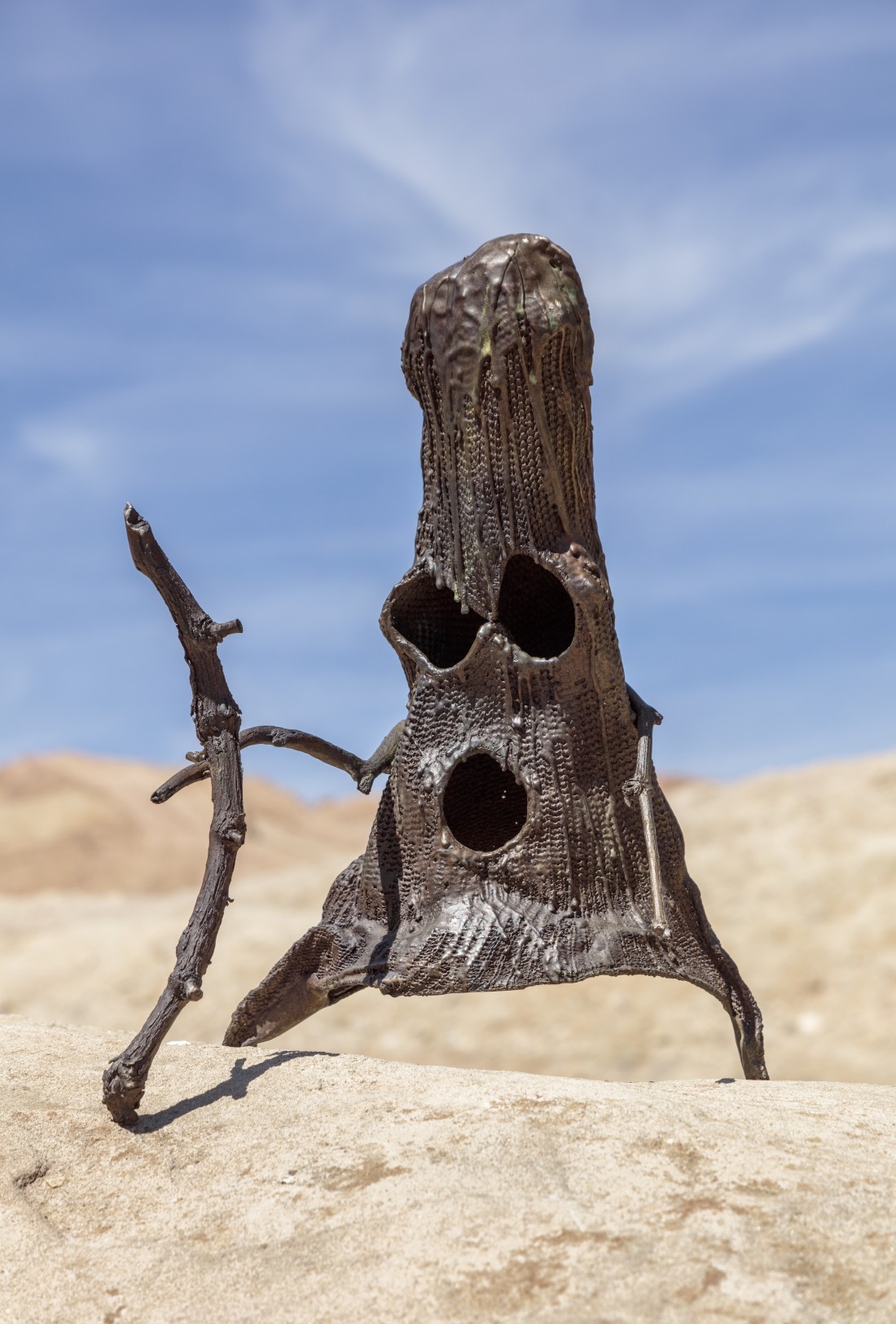On Jon Pylypchuk’s Ghosts
“To our towering friendship / I’ve raised this little stone”
One of my favourite works by Jon Pylypchuk is an ashtray he made for a magazine, in an edition of 150. Silkscreened onto white ceramic, one of his heartbreaking characters, both battered and somehow adorable, stands with a scowl that stretches past their face, which is also their body: a block, eyes two melting buttons, legs and arms a pen stroke, holding a half-empty bottle in one branchy arm and a smoking cigarette in the other. A caption above reads on the flat circle of the ashtray’s face, “I wish my parents were still alive.” When I first saw this piece, spilling over with spent cigarettes and delicate ashes in Jon’s studio almost 10 years ago, the simplicity and truth of these words sent an icy shiver through me. An ashtray is something entirely useful for a smoker and also an accoutrement of a kind of self-harm, the kind that comforts you when few other things can. Since then, both my parents have died, and I feel like that character, battered and I hope adorable, smoking a cigarette as I write this: I wish my parents were still alive.

Jon Pylypchuk. Courtesy the artist and Petzel Gallery. Photographs: Joshua White/JWPictures.com.
Looking at Jon’s ghosts, made during the pandemic and cast in bronze, I feel again this grief that just won’t quit. They were made for Jon’s friend, a response to his death, but they can, in their humble bodies, carry my mourning, too. They are almost totems, magic figures, these rough textiles becoming people, becoming us. They are not us, but how else are we supposed to grieve? Their faces, poked out of underwear and tattered socks, are filled with complex emotions in their rudimentary features, horror and sadness and something ultimately pathetic and totally human. They are just far enough from actually being people to give me a taste of dissociative distance, so very human as to dive into some abyssal well of sorrow within me. I’m sure many works will come out of the pandemic, hand-wringing art about isolation and social responsibility, revealing how blithely productive some artists were amidst a holocaust. Jon’s are the first works I’ve seen that make me feel the depth of what was lost. When I think of the pandemic and try to give it a face in art, I will think of these ghosts.
The patinas of the bronzes, cold and smooth, darkly enduring; somehow this metal is both hard and soft, ductile maybe and just dirty enough that it works, especially for these creatures. Some are polished to glowing perfection; others are like burnished pennies; many wear their darkness like a thick coating of smoke. They wear the colours and shine of their patinas as if they were souls and not surfaces. They were fashioned from the ephemeral and cast in a substance that will endure. Perhaps this is the best any art can attempt to do in the face of mortality.
Jon’s work has often been formed from the junkiest of materials, whether stuck with scrap wood and bubbling with exotic foams or bits of fabric swimming in flat pools of resins, sometimes, as here, formed of something humble and cast in lasting bronze. His work captures a pathos, a poetry of being, that few others can—a horror-struck tenderness, a laugh through broken teeth. If you think they look cutesy, something for children, I worry about your childhood. Though, truly, too many of our childhoods were perhaps worrisome.
“But what of ‘spirit’ standing by itself, a naked noun, bare as a ghost to whom one would like to lend a sheet?” —Robert Musil, The Man Without Qualities, 1930.

Jon Pylypchuk. Courtesy the artist and Petzel Gallery. Photographs: Joshua White/JWPictures.com.
I like how ghosts wear sheets in fiction, from Pac-Man’s sworn enemies to how the Maitlands in Beetlejuice, 1988, poke holes in the Deetz’s designer sheets and a million other references. There’s a sweetness to it for me. I hope if and when I become a ghost, someone lends me a sheet.
But I don’t believe in ghosts, at least the kind that wear sheets and haunt the unsuspecting in horror films. I don’t have to believe in ghosts, I live amidst and amongst them. The poltergeists of the movies are just silly; real ghosts inflict themselves in much subtler, more sinister ways. They shape my memory and live in my body. They warp laws and cities. They howl from every word I speak, and the longer I’m alive, the more they affect me or maybe the more aware of them I become. And though ghosts are often seen as ethereal, lacking bodies, in me they are heavy, as heavy as cast bronze.
Perhaps we give ghosts sheets to give the invisible form again, a form outside of us. To give these ghosts a body is to set them free from having to live only in evidence and memories, to live only in us. Or to make sculptures of them or write about ghosts is an act of both memorial and exorcism; it is to reveal those feelings that cannot be buried, refuse to be buried, and regard them. And though this reads as dark, and sometimes is, love is also one of those things that refuses to be buried.
From an anonymous inscription at the Battle of Salamis, 480 BCE:
To our towering friendship
I’ve raised this little stone.
Sabinus, I will look for you forever.
If things turn out as people say
And you join the dead,
To drink from the river
That helps men forget,
Please don’t drink the drop
That makes you forget me.❚

Jon Pylypchuk. Courtesy the artist and Petzel Gallery. Photographs: Joshua White/JWPictures.com.
Andrew Berardini is a writer and curator from California. His book Colors is forthcoming from Nota Cult Media/Chapterhouse in May 2022.

